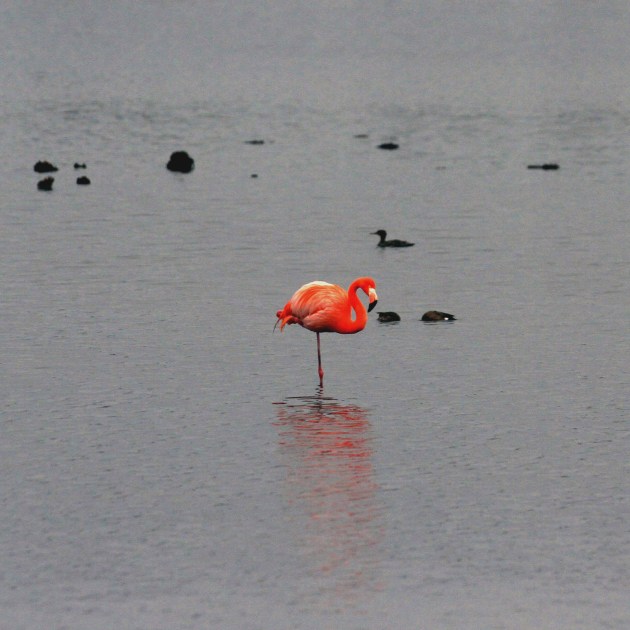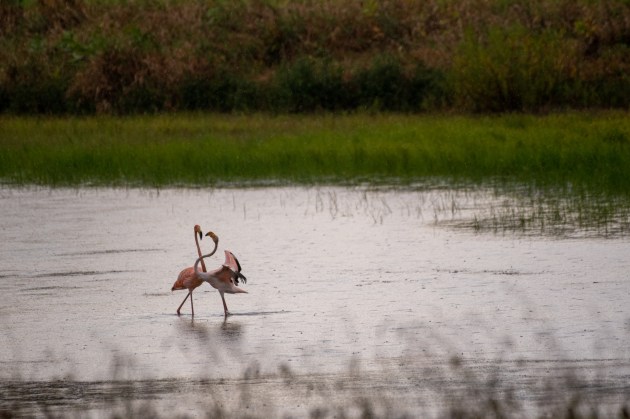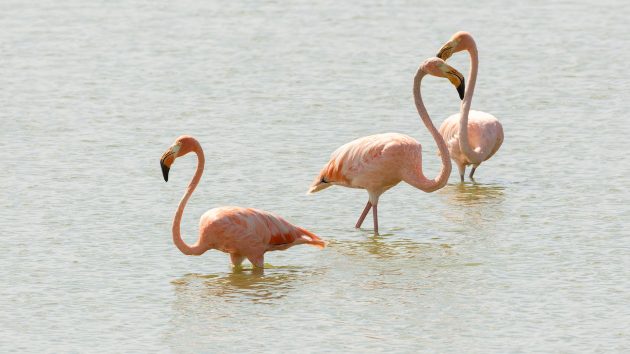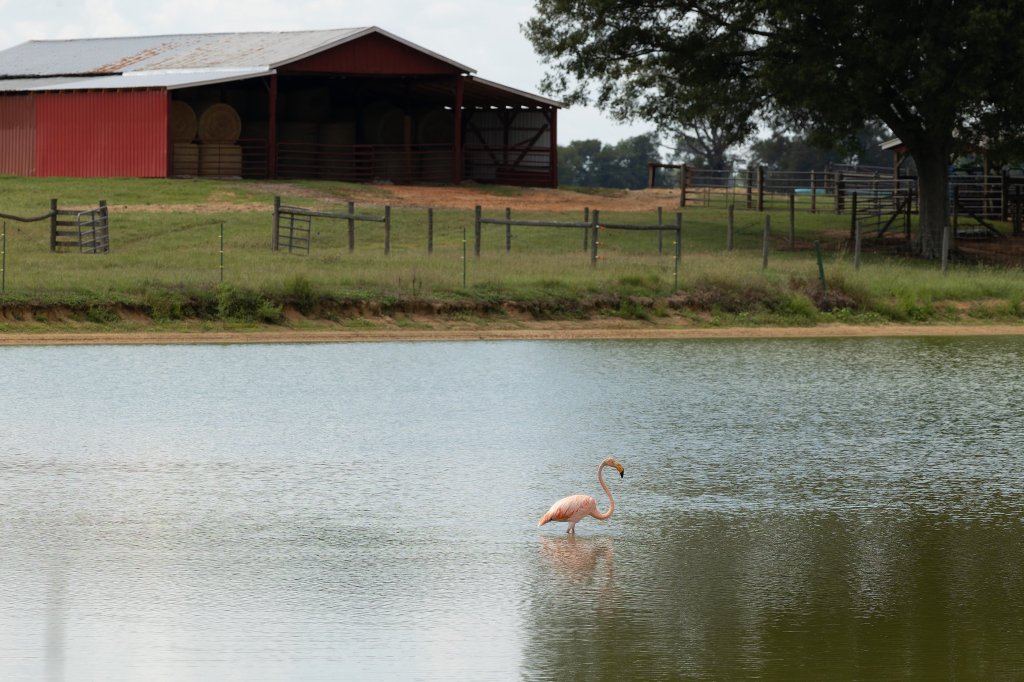Far removed from the natural destruction and human tragedy that plays out as hurricanes make landfall, the aftermath of a strong tropical storm system can provide unique opportunities for spotting rare birds.
In recent years, reports of storm driven inland seabirds have included frigatebirds, boobies, terns, and storm-petrels. A smattering of sea species was also noted in the aftermath of Category 3 Hurricane Idalia which made landfall near, Keaton Beach, Florida’s Big Bend area, on the morning of August 30, 2023.
One highly visible species that is making this storm system especially memorable for birders is the dayglow pink American flamingo. A couple of weeks removed from the blustery wind conditions flamingos have now been spotted in ten eastern states from Florida to Pennsylvania. (American Birding Association is maintaining a database of birds from the post-Idalia flamingo influx.)
According to naturalist and author Kenn Kaufman, there is precedent for flamingos being brought north with hurricanes. “It has happened several times with one or two birds.” Yet, he continues, “Seeing numbers like these, scattered all over the place is remarkable.”
Florida Flamingos
Free-range flamingos haven’t been icons in Florida for nearly a century. Despite thousands of birds likely forming established breeding colonies in at least the Keys throughout the 19th Century, a combination of market hunting and habitat loss pushed the birds out of the state by the early 1900s. Beyond the 1930s, Florida flamingo reports were of isolated individuals.

Over the next 90 years, any flamingo sighting was notable in the United States. Occasionally, a single adult flamingo would show up in Florida. Hurricane-assisted birds were documented in Florida in 1927, 1965, 1972, and 1995. A bird arrived at St. Marks National Wildlife Refuge in the panhandle following Hurricane Michael in 2018. That bird, affectionately called Pinky, has been seen with regularity ever since. One lone bird isn’t enough to establish a breeding population, however.
A couple of the new arrivals have leg bands indicating they were from the Ria Lagartos population of Yucatan, Mexico. Another potential origin for recent Florida flamingos includes western Cuba. (It’s worth noting that many Yucatan birds have dispersed to Cuba, so having been banded in Mexico doesn’t mean the birds came directly from there.) The recent push of birds into Florida care of Hurricane Idalia gives hope for reestablishing a nesting colony in the United States.
The natural ebb and flow of a species range can play out over generations. Perhaps these birds will become the core of a new flamboyance of flamingos. Then when future birds show up, they’ll find suitable habitats and suitable mates to naturally recolonize the nearly 100-year void.
Kaufman has pondered the potential for a Florida breeding colony of Flamingos. “Flamingos need extensive wide-open space with shallow water that doesn’t vary too much.” He suggests shallow lagoons near Fort Myers might hold the best habitat outside of the Keys.
Flamingos of the North
While there is hope that the Florida flamingos can get a pink-footed toehold on the shores they once inhabited, the Idalia birds that flew farther north are less likely to thrive. Individual birds might survive, but the smaller numbers make population viability difficult to comprehend.
Hurricane Idalia clearly brought a number of flamingos to Florida, but for Kaufman, what is truly “bizarre” is how many birds ended up farther north and west of there. The birds just keep shifting around he said.

There is some debate if the adult and juvenile flamingo reported at Caesars Creek State Park in Ohio are the same birds that ended up in southcentral Pennsylvania a few days later. Either way, these northern locals aren’t typical flamingo habitats.
Neither is the old catfish pond in Stewart, Alabama, which has been home to three flamingos since early September. Most of the flamingos seen are reported from public property, but these Alabama birds have found a temporary home on a private pond.
The birds are sometimes visible from the nearby road, but landowners Tommy and Debi Martin and Donnie and Janet McKemie have been generous enough to let many visitors (including one very excited journalist from Indiana, me, who was on his way to the Outdoor Writers Association of America Conference in Gulf Shores, Alabama) access the near side of the pond while the birds foraged about on the backside of the waterway. Tommy admittedly isn’t a bird guy, but there is a sense of pride when he talks about the flamingos that have taken up residence on his family farm.

“Who would have thought flamingos in Stewart, Alabama,” he beams. “There are plenty of catfish ponds in the area, but there is something special about this pond.”
If you want a shot at finding a flamingo north of Mexico, this fall might be your best bet. However, nobody knows how long the birds might stick around. Kenn Kaufman notes that flamingos are strong fliers. The various species all tend to have histories of making long movements which bolsters his theory that many of the Idalia birds will simply return south eventually.




Join the Discussion
1 comment